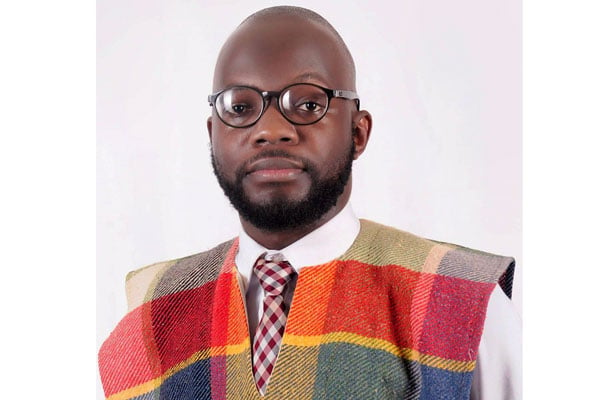What has ‘defiance or structure-building campaign’ achieved?
What you need to know:
The challenge. To show how ineffective the structures approach is, they have always asked Muntu to show them the structures he claims he has built overtime both as the party’s secretary for mobilisation and party president. It is not difficult to understand why the defiance campaign unlike the structures approach is quite popular.
Opposition Forum for Democratic Change (FDC) has a new party president. Former Kumi County MP, Patrick Oboi Amuriat, aka POA, defeated incumbent Maj Gen Mugisha Muntu in a hotly contested election. For a long time, FDC has been a party seemingly driven by two clashing views on how to go about the business of capturing power.
The first, fronted by Dr Kizza Besigye, a four-time unsuccessful contestant for the Ugandan presidency, is the defiance campaign. This campaign is premised on the notion that the ruling party is a dictatorship that has no regard for law and order. Its main driving force is violence and all forms of underhand methods like bribery, intimidation and infiltration of the Opposition to subdue them.
The solution to this is not to take a gentlemanly approach of negotiation, but disobedience, including pushing and shoving on the streets, if need be. In other words, answer violence and lawlessness perpetrated by the ruling party in the same currency as you fight to market the ideas of the party to the people. POA, who was fronted by Besigye, is presumably from this school of thought.
The second, promoted by Muntu, is putting in place mechanisms that approach voters at the grassroots to interest them in the party. These mechanisms will eventually spread the FDC gospel all over the country, linking ordinary folk to the leadership of the party. It is mainly non-confrontational and persuasive. It has been dubbed “building the party structures approach”. Going by the results of the FDC presidential election, the majority of the delegates think that defiance is a winning strategy. Many of them despise the structure approach deeming it too soft. In fact, they claim that it is a sign of coziness with the ruling NRM, openly accusing its sponsor Muntu of being an ‘NRM mole’ bent on undermining the party to weaken it for the smooth sailing of NRM.
To show how ineffective the structures approach is, they have always asked Muntu to show them the structures he claims he has built overtime both as the party’s secretary for mobilisation and party president. It is not difficult to understand why the defiance campaign unlike the structures approach is quite popular.
First of all, it always makes headlines and is widely reported in all media because the protagonist like Besigye put on a show of force, which invites the security agencies to pull out their tools of coercion to put them down. The violent running battles help ‘prove’ to the world how bad NRM is. Pictures of Besigye and his supporters being beaten, bleeding, teargased and thrown onto police pick-up trucks or behind bars, shot and killed, is ‘evidence’ enough that they are suffering for FDC and democracy. This is unlike someone who is quietly moving from house to house (if at all he is) convincing people to join the party and vote for it.
Secondly, when Besigye and his supporters disobey the police, throw stones at them, etc, it gives a sense of satisfaction to party supporters and other people disgruntled and cowed by NRM, that at least someone is brave enough to fight back and take a beating on their behalf. But besides that and not to take away anything from Besigye and the defiance tendency of FDC, it is pertinent to ask what tangible results the defiance campaign has achieved thus far. Apart from making headlines and giving a good feel effect that they are brave enough to stand up to the bullying NRM, what is there to show for defiance? Has NRM conceded some democratic space?
Has defiance led to the amendment of electoral laws to ensure future free and fair elections conducted by an independent electoral commission? Have the security forces been forced by the defiance campaign to keep away from interfering with the electoral process and denying citizens their right of association and expression? Are more Ugandans being convinced to register for the next election and vote plus ensure that their vote counts and is counted accurately?
Is the defiance campaign emboldening them to fight NRM’s dictatorial tendencies in case they are bent on not respecting the will of the people? Has it put NRM on notice that should they engage in gerrymandering at future elections, they risk being uprooted by a revolt by the people? The work for POA and FDC is cut out as he goes about with the defiance campaign. The reality is that FDC for a long time has not and will not be capable of matching or surpassing the NRM government’s violence capabilities. They will always run into a brick wall, but of course, make great colourful headlines.
Yet if POA goes all out to quietly build the party structures, he should still understand that the environment in which parties operate is draconian and Machiavellian. NRM will not easily yield ground to the Opposition to make their pitch. It is a catch 22 situation and quite a tall order, but may be mitigated by reaching out to people who have been there like Gen Muntu and working out a way forward. Alienating and ridiculing the Muntus and those not agreeable to the defiance campaign and dismissing them as NRM moles is the recipe for disaster. Why? Because those who want to stay in the party, but are not keen on defiance will take a back sit. FDC is not that big to afford losing supporters merely because of a difference of opinion and strategy.
Mr Sengoba is a commentator on political
and social issues. [email protected]
Twitter: nsengoba




